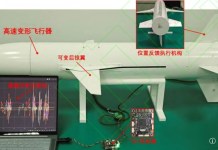The Indian Air Force (IAF) has released the latest images of its Rafale fighter jets conducting sorties armed with wingtip-mounted MICA short/medium-range air-to-air missiles in Ladakh.
This comes almost two months after the de-escalation of the border standoff with China.
However, this is not the first time Indian jets were seen flying over Ladakh armed with MICA AAMs. In September last year, images of an IAF Rafale and Mirage 2000 surfaced on social media showing both aircraft reportedly near the region equipped with the missiles.
It was part of “familiarisation sorties” for the Indian pilots to ensure and maintain operational capability with the aircraft. But, this is indeed the first time these missiles are seen on the official social media accounts of the Indian Air Force.
What’s Special About MICA Missiles?
Developed by the French company MBDA, the MICA (abbreviated for Missile d’interception, de combat et d’autodéfense) is one of the most advanced short to medium range air-to-air missiles in the world.
The Rafale and latest versions of the Mirage 2000 aircraft are equipped with MICA missiles. The Indian Air Force is also looking forward to integrating the missile with its Su-30MKI air superiority fighter jets. In August last year, the service secretly test-fired two rounds of MICA missiles from its Flankers, successfully destroying the expendable aerial targets.
Where Eagles dare. pic.twitter.com/JQDqKU9GvS
— Indian Air Force (@IAF_MCC) April 6, 2021
MICA offers a unique engagement capability, which can be used as a both short-range and beyond visual range missile. The weapon is offered with two interoperable seekers, in two versions namely:
- RF MICA with radar seeker providing all-weather shoot-up/shoot-down capability
-
IR MICA with dual waveband imaging infrared seeker surpassing latest generation AAM missiles.
According to the company, MICA outperforms other BVR missiles with its unique stealthy interception capability provided by its silent seeker.
The Indian Air Force recently received the fourth batch of its Rafale fighters, taking the total aircraft in service to 14. The IAF is also set to raise the second Rafale Squadron at Hasimara in West Bengal by mid-April.
Of the 36 Rafales ordered, six would be the twin-seat “Rafale DH” variants, and the remaining 30 would be the single-seat “Rafale EH” variants.




